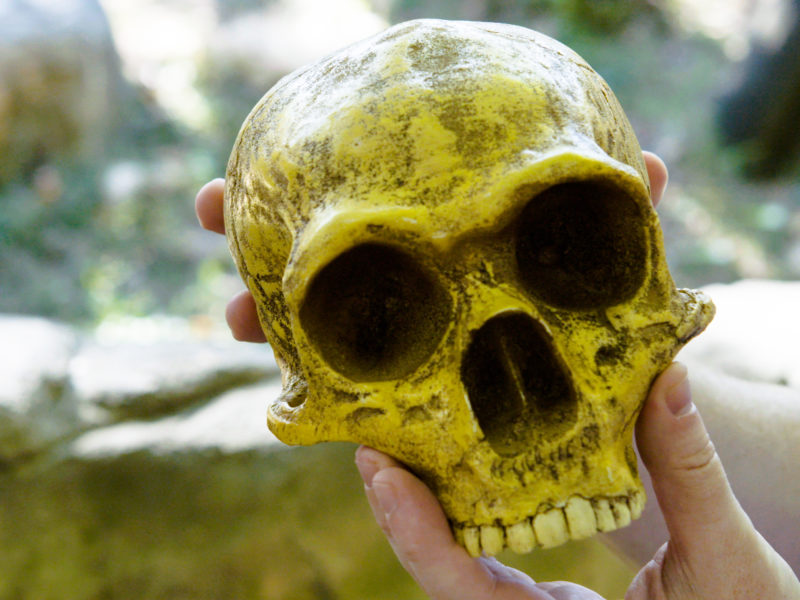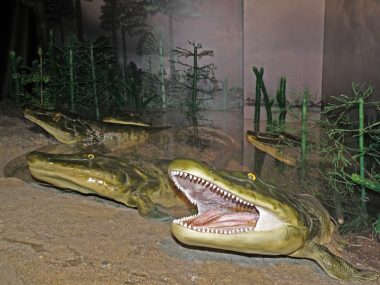The following is an open letter to a theologian friend who recently asked how he might sort out his own views on fossil hominins. I thought this might be of interest to others, particularly theologians or pastors who have regular contact with those in the sciences, so here are my thoughts on the subject. Enjoy!
The following article has been reblogged with permission from Todd’s Blog. The views expressed reflect those of the author, and not necessarily those of New Creation.
First of all, thanks for asking. I find too many theologically-trained individuals either disinterested in the many questions raised by fossil hominins or intimidated into a simplistic response. For those of us Christians working in the sciences, fossil hominins are among the most challenging issues that we might face. It’s always struck me as so very odd that the source of so much anxiety in believing scientists is shrugged off as uninteresting or unimportant by theologians who are supposed to be trained to help. Your question is already a glimmer of hope. Now if only more theologians would ask such questions!

So you want to know about hominins? I couldn’t possibly give you a complete rundown on the science of paleoanthropology without teaching an entire course on the matter, but I think there’s at least one issue we should tackle before we begin: What in the world is a hominin anyway?
From the evolutionary perspective, a “hominin” is any primate that’s more closely related to humans than chimpanzees. To put it in terms of a family tree, hominins diverged from the line that led to humans after chimps diverged. That might not mean much to you, but when we use the word hominin uncritically, we’re already conceding a huge part of the epistemic assessment of these fossils to the evolutionary perspective. Obviously, if we don’t think humans and chimpanzees share a common ancestor, or if we think that should be an open question, we’ll need a different, more neutral definition of hominin that does not use the common ancestry of humans and chimpanzees as part of the definition.
Fortunately, there is such a definition readily available. Hominins can also be thought of as primates that habitually walk upright on two legs. Some might call this an “essentialist” definition of hominin, but that need not be so. We may merely choose to approach this definition pragmatically in terms of similarity. Since all we know today are non-human great apes that walk on all fours (quadrupeds), it stands to reason that any evidence of habitual bipedalism (regularly walking on two legs) would evidence something different from living apes and more similar to living people. If we do not insist that the common characteristic of upright walking equals close common ancestry, we may simply speak of similarity without regard to the source of that similarity. Thus, when I speak of hominins, I’m referring to creatures that regularly walk upright on two legs.
“Hominins can…be thought of as primates that habitually walk upright on two legs.”
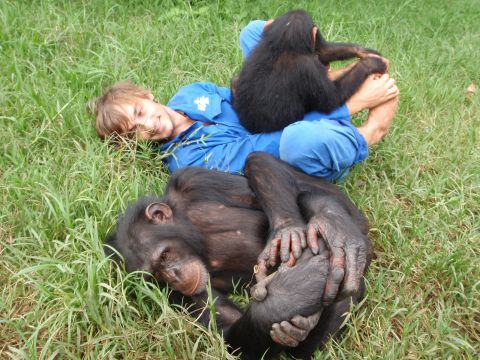
Likewise with the term “human.” Sometimes I see headlines about “extinct humans,” that are very likely not human at all. Among Christians, the default assumption seems to be that humans are Homo sapiens, and that the search for Adam and Eve should focus on the origin of modern humans 150,000 years ago on the conventional time scale. These contradictory uses of “human” emphasize the confusion that arises from imprecise terminology. For me, human merely refers to those people that descended from Adam and Eve, and I try to make the bare minimum of assumptions about what they might look or act like. I certainly would not want to equate human with some recent, scientific conception like species or the even more recent name Homo sapiens. Even the scientific term Homo sapiens is loaded with historical meaning. Did you know that Linnaeus initially shoehorned humans into four species based on the doctrine of the humors, and later when he put us mostly into Homo sapiens, he still maintained a separate species for tribes like the Khoikhoi?
So that’s my first big comment: Be careful what you say and what you mean by what you say. Words matter, and they’re loaded with meaning. Don’t concede in the words you use the very question at hand.
That brings us to the big question on your mind: What are they? Are they human? Are they not human? You asked me if we could boil this down to “hominins are human” vs. “hominins are not human.” I hate to say it, but it ain’t that easy. The answer is somewhere in the middle (some hominins are probably human and other hominins are probably not). Let me walk you through what I think about the subject.
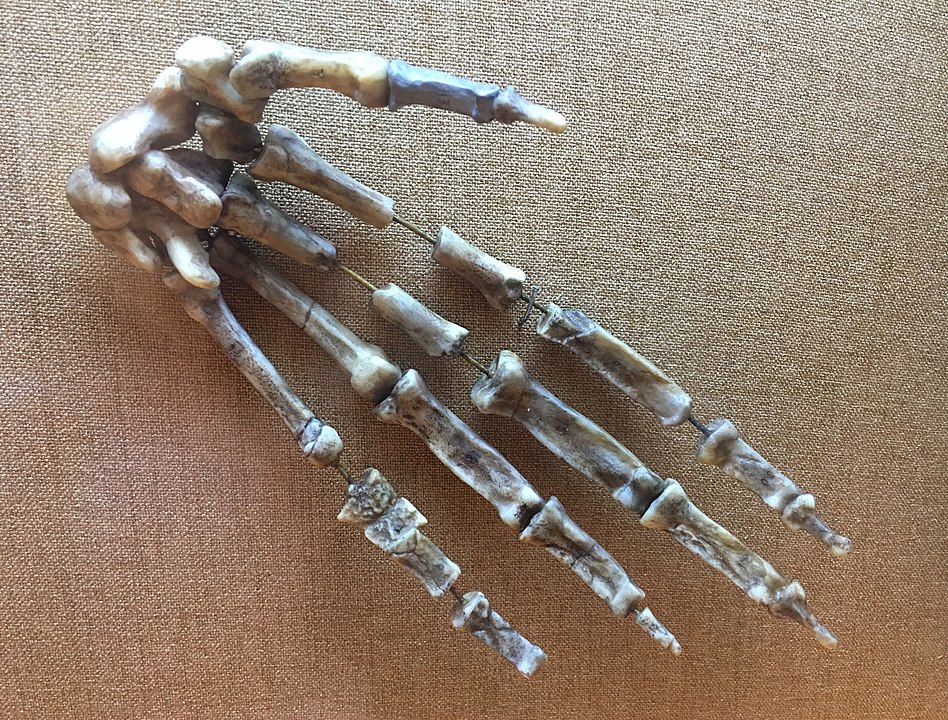
Extinct hominins from the fossil record include creatures that don’t look much like us and creatures that could readily pass without notice in a crowded airport if they wore modern clothes and a hat. The former group of “unlike us” hominins include things like Ardipithecus and the magnificent Little Foot skeleton, both with tiny heads, long arms, and opposable big toes. Neandertals, on the other hand, could go through airport security without much fuss. They do have skeletal differences, but they’re pretty minor.
So the question you really want to know is which hominins are human and which hominins are not? You can see right away that that’s a more complicated question. To answer it, we’ll need to think about how we might identify humans from nonhumans, if the nonhuman looks a lot like us (moreso than a chimpanzee)? In doing that, we have to confess that sometimes we’ll be unsure. If we think of humans as those people descended from Adam and Eve (see above), it’s not entirely clear how we might identify that genealogical heritage from a skeleton. In some cases, we can pile up lots of different evidences that add up to an answer I’m pretty confident of, but in other cases we might just have to be uncertain.
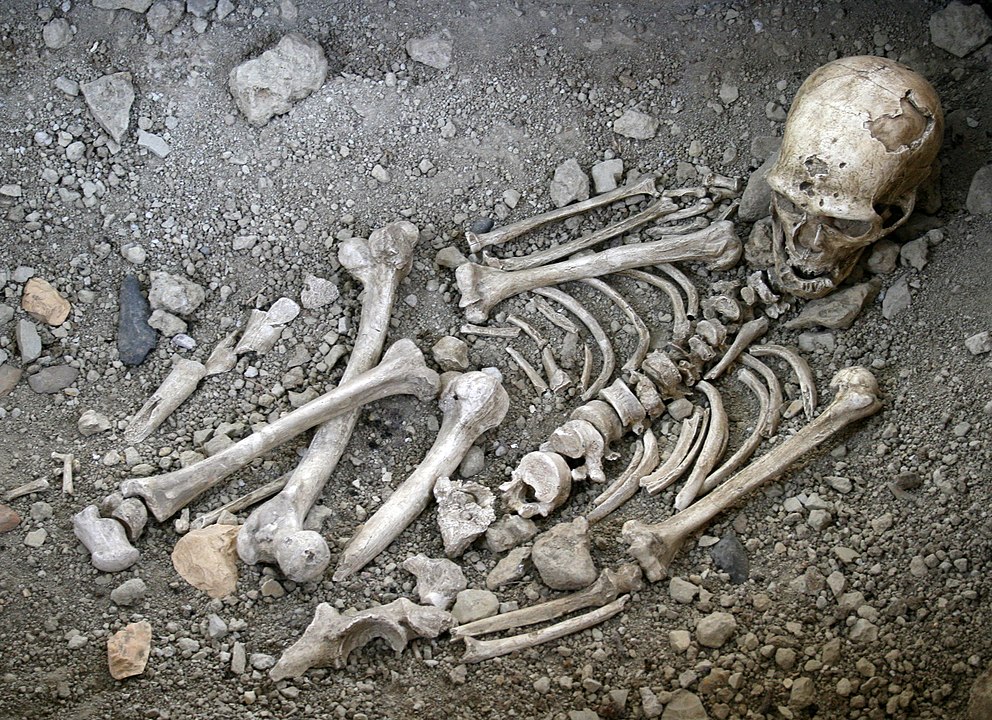
For example, I think the Neandertals offer a pretty clear test case. Neandertals are extremely similar to us anatomically and genetically. They also engaged in decidedly human behaviors, like making sophisticated tools, making fire to cook their food, and painting sea shells to wear as decorative jewelry. We’ve long thought that at least some of them buried their dead, and the skeleton known as Nandy (Shanidar 1) even hints that Neandertals cared for each other. Nandy’s skeleton shows a healed facial wound that probably left him blind in one eye, growths in the ear canals that probably left him mostly deaf, a right arm missing the hand (either by developmental abnormality or amputation), and a healed broken neck (at C5). Nandy lived a hard life, and it’s really difficult to imagine how he could have survived all his injuries without some care from his fellow Neandertals. Add to all of this the genetic evidence of interbreeding with the ancestors of us moderns, and I think we have a slam dunk case that Neandertals were human. That is to say, Neandertals were fellow descendants of Adam and Eve.
For other hominins, I think we have good reason to doubt their humanity. Most australopiths, for example, don’t seem to evidence advanced behaviors like burial of the dead or even the use of stone tools beyond smashing rocks together. Their anatomy is quite different from that of modern humans, so much that they almost seem more similar to chimpanzees, if it weren’t for the evidence of walking upright. Taken together, the whole of the evidence makes me skeptical that something like Australopithecus afarensis (Lucy) or the Little Foot skeleton were human beings. They were animals that looked a lot like us (compared to a gorilla or orangutan), but they were animals nonetheless.
Then there are the less certain hominins where the evidence is incomplete, and that brings me to my next big point: Even though these hominins are very interesting and even challenging, there is a lot we don’t know.
Sometimes when I hear theologians make reference to hominins, they act as if everything is settled, as if “all the evidence” supports whatever conclusion they want to argue for (creationist or evolutionist). The more I study anthropology, the less comfortable I become with certainty. There is just so much that we don’t know, and the science is changing fast with spectacular new discoveries every five years or so.
![Image Credit: Rosino - [1], CC BY-SA 2.0, https://commons.wikimedia.org/w/index.php?curid=4567792](https://newcreation.blog/wp-content/uploads/2021/11/1083px-Homo_floresiensis_cave-1024x681.jpg)
We can see this uncertainty in a couple of different ways. One way is in the paucity of evidence we have for certain hominins. For example, in southeast Asia, we have evidence of small-bodied hominins living in modern Indonesia and the Philippines. On the Flores, we have a decent amount of evidence in the form of a partial skeleton and stone tools from the Liang Bua cave. At a nearby site on the same island, we have teeth and a jawbone that are of a similar size but different from the Liang Bua hominins. In the Philippines, we have an ancient and elaborate rhinoceros butchery site and more recent small teeth and bones that evidence yet a third (and possibly fourth) type of small hominin. (See here for more on these discoveries.) Right now, that’s all the evidence we have. It certainly looks like humans have been in southeast Asia for a very long time, but we really don’t know who killed that rhino or how these hominins may or may not be related to us. There’s just not enough evidence to be sure about much (for comparison, there’s >400 Neandertal individuals known from across Europe and Asia, and even from the Holy Land). My own evaluation of the southeast Asian hominins puts them in the human category, but obviously there’s much we don’t know and my assessment could be wrong.
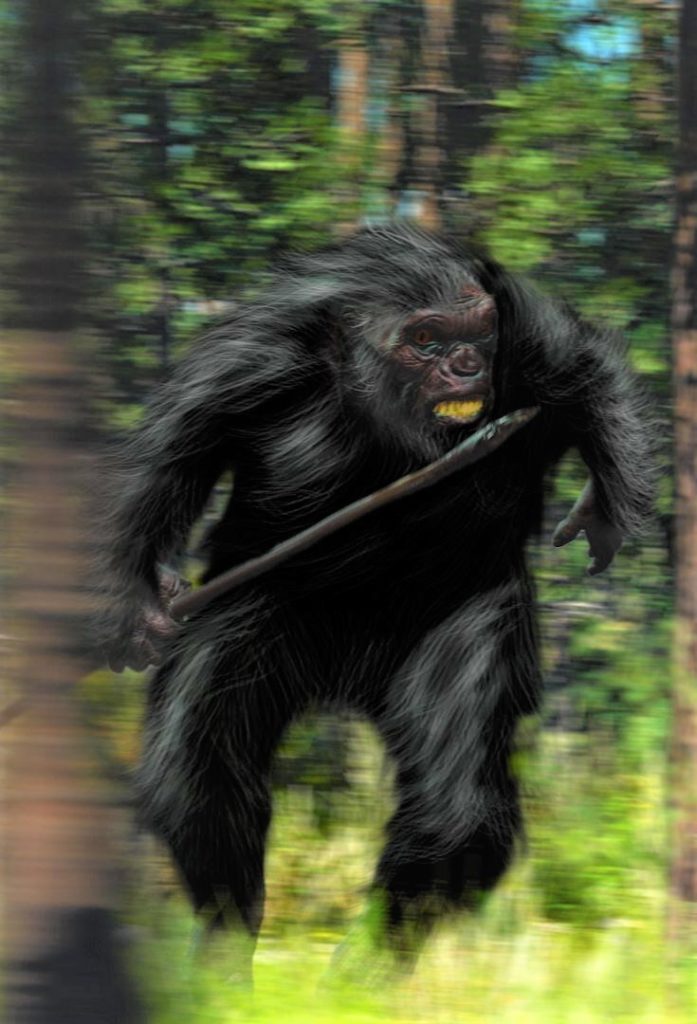
The second big way we see uncertainty play out in hominin research is the regular and sometimes revolutionary discoveries that make us rethink past assumptions. Some creationists will seize on these discoveries and conclude that evolutionists are just making everything up and you can’t trust anything. I don’t see anything nefarious in these revolutionary discoveries. This is just how science works: We scientists make conclusions based on the evidence at hand, and then new evidence comes to light that makes us revise our conclusions. It’s how rationality works. When we learn something new, we might change our minds.
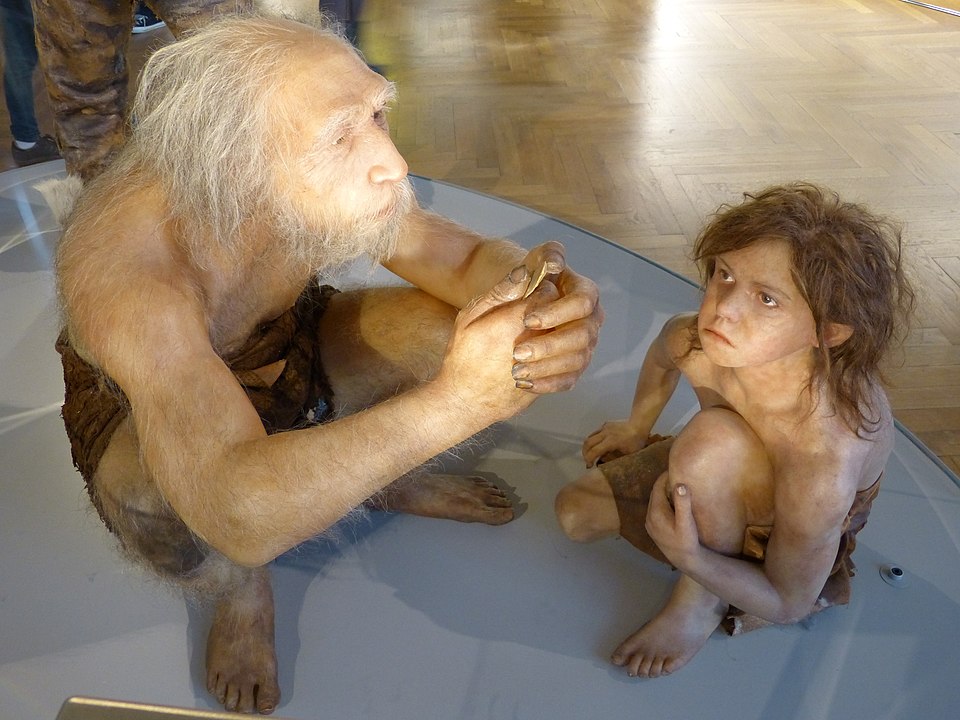
The revolutionary aspect of some discoveries has almost become a trope in science. For example, opinions about Neandertals in the early twentieth century perceived them as animalistic brutes that were barely more advanced than gorillas. Ralph Solecki’s discoveries at Shanidar cave (see the aforementioned Nandy) made people rethink things. There’s still a lot of discussion of just how “advanced” Neandertals were, but I can’t think of anyone who looks at Neandertals as no more clever than gorillas. More recently, discoveries have challenged the sort of linear view of human evolution that assumed (based on ecology) that there could only be one hominin species alive at any one time. If there were two hominin species alive at the same time, they would compete, and one species would drive the other to extinction. Genetic evidence of interbreeding with Neandertals indicate that Neandertals and humans did not always fight to the death when they met. The discoveries at Flores (mentioned above) and Rising Star (Homo naledi) both reveal hominins different from Homo sapiens that exhibit impressively human-like behaviors (sea faring in the case of the Philippines, and burial of the dead in the case of H. naledi) at the same time on the conventional timescale that Homo sapiens existed or could have existed.
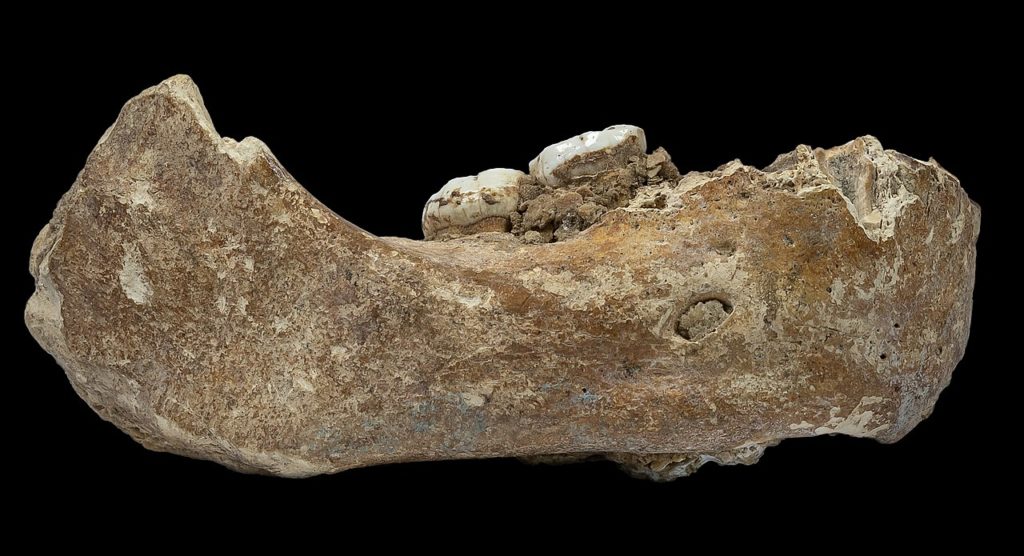
The third way we see the uncertainty and incompleteness of hominin evidence is with discoveries no one is quite sure what to make of. Ancient DNA studies about a decade ago uncovered an entire lost group of hominins with big molars that we call Denisovans. We still don’t know much about their appearance, and we did not expect them from studies of the fossil record. Over in the Republic of Georgia, scientists have found five different skulls at a site called Dmanisi, and experts are still debating whether they belong to a single, variable species or represent more than one species. Over the years, in my many interactions with theologians and Bible teachers, I’ve heard the advice that one shouldn’t make a big doctrine out of a single verse in the Bible. That sort of thing leads to error. Instead, we should emphasize those parts of scripture that are clear and repeated to infer important doctrines. Same goes for anthropology. Parts of the record, I think, are very clear, but other parts are very murky and uncertain. Don’t let scientists or other theologians bully you into thinking that it’s all very obvious and consistent and that you must make a firm conclusion right now.
As I think about different “evolutionary creationists” that I know, there seems to me to be a kind of discomfort about all this scientific uncertainty. I definitely see some voices in the debate zealously defending a view of Genesis that denies that it has anything to say about historical reality. They seem to want to construct a theology that is wholly impervious to science, a theology that will never change no matter what scientists have to say. Needless to say, I think this is tragically wrong. To me, the uncertainty of anthropology is beautiful in two very important ways. First, it keeps us humble, because we’re prone to make mistakes, and those mistakes are constantly coming to light. Second, it’s exciting. What will we discover next? What will that tell us about God and his creation? It’s a thrill to see new works of God finally come to light after all these years. But more importantly, it’s true to our existence in both theology and science. I would never dream of claiming that I know all there is to know about God and that there are no unanswered theological questions. Why would I make that sort of claim about anthropology?
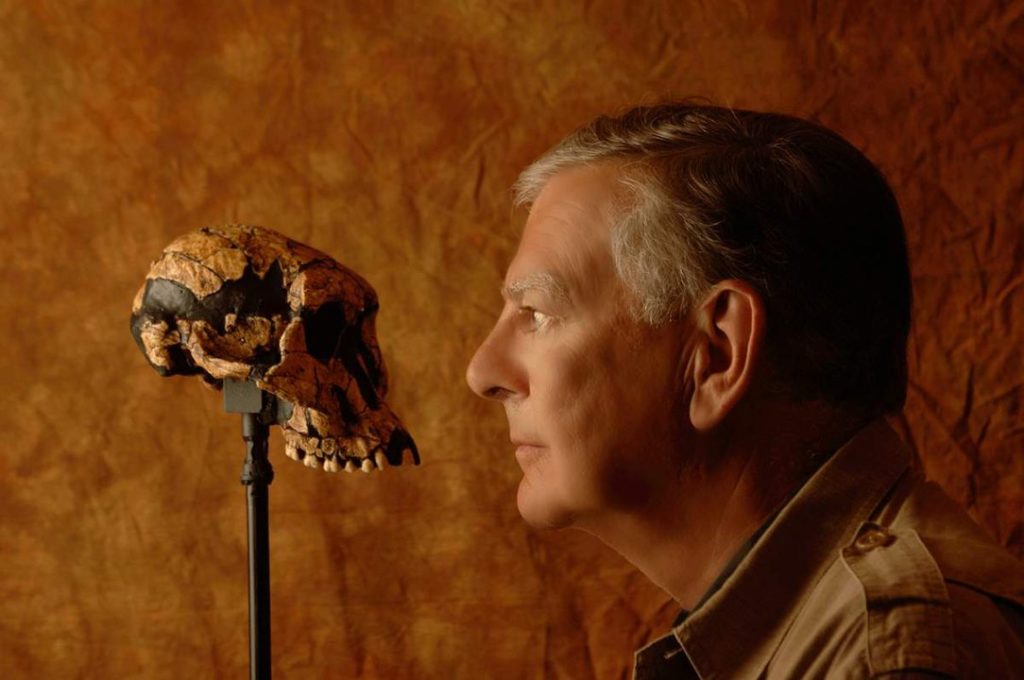
Of course, working through all these questions leads to other questions that start to get into even more difficult details. We can hardly talk about hominins without thinking about the age of these fossils and how those ages might relate to the events described in the Bible. Likewise, beyond just hominins, we also have many questions raised by archaeology. Places like Stonehenge or Gobekli Tepe and discoveries like Otzi the Ice Man also pose difficult questions of how to reconcile this evidence with Scripture. Then on the scriptural side, I find it rather surprising how theologians and biblical archaeologists see Babel as a strictly local event, and I wonder if that conclusion is driven by the science or by the text. How should we understand the Flood? Just a legend? Legend based on fact (like the so-called “Black Sea Flood”)? Or is it a historical record of something even bigger? I guess my advice is to be humble and recognize the difficulties for what they are. Don’t be so humble as to seriously entertain the improbable and unlikely, and that goes for all sides. I think the constant calls of “fraud” every time a new discovery is announced or the reassurance that human evolution poses no difficulty for the Christian faith are equally unbelievable. On the other hand, countering arrogance and overconfidence with overconfidence will very likely lead you down the wrong path.
To sum up, my main points are these:
- Be careful how you define terms like hominin or human. Everyone seems to think we all know what they mean, but I find too often terminology is more a hindrance than a help. Be precise.
- The answers you seek are not found in a simple dichotomy of hominins are or are not human. Reality is more complicated.
- The science of anthropology is full of uncertainties, despite what some anthropologists (and theologians) want to tell you. Don’t be deceived into thinking that everything is settled, and it’s just a matter of fitting theology to this unassailable science. It’s not remotely so simplistic.
I hope and pray these ideas give you some guidance as you explore the issues on your own.
If you want to dig deeper, here are some papers you might consult:
- Here’s a review of Jack Collins’s book where I raise a lot of these same questions.
- Here’s a short essay from Gary Phillips that discusses how we ought to react to hominin discoveries.

